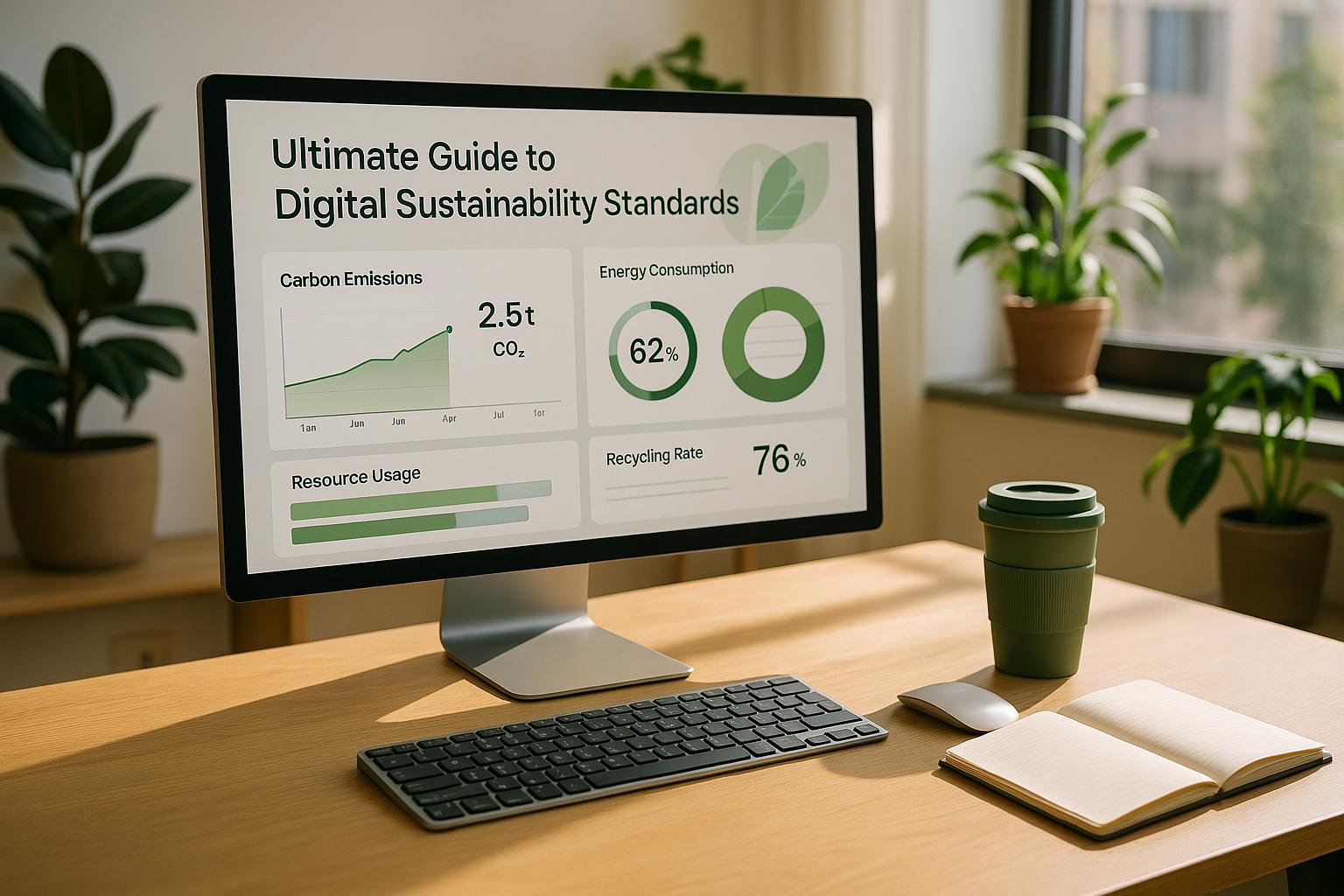Agile cross-functional teams bring together experts from various fields to work collaboratively, but managing risks is crucial to project success. Here's how you can tackle common challenges and improve risk management:
Key Takeaways:
-
Common Challenges:
- Unclear Roles: Leads to duplicate work, missed deadlines, and poor accountability.
- Inconsistent Risk Assessments: Different team priorities can cause conflicting strategies.
-
Practical Solutions:
- Create a centralized risk log to track risks, impact, and mitigation plans.
- Use a risk response chain to address risks based on their severity.
- Incorporate daily risk discussions and automated tools to monitor trends.
-
Tools & Metrics:
- Tools like the B2B Ecosystem's Risk Analyzer help with real-time tracking and automated alerts.
- Track metrics like Mean Time to Resolution (MTTR) and Risk Prevention Rate (RPR) to measure success.
Quick Comparison:
| Challenge | Impact | Solution |
|---|---|---|
| Unclear Roles | Duplicate work, missed deadlines | Define roles, accountability, and ownership |
| Inconsistent Assessments | Conflicting risk priorities | Use structured methods like risk logs |
| Slow Risk Response | Delayed actions | Automate alerts and review risks regularly |
How to Integrate Risk Management into Agile Projects ...
Risk Management Issues in Agile Teams
Agile teams often encounter challenges in managing risks effectively. Two key issues stand out: unclear roles within the team and inconsistent approaches to evaluating risks.
Unclear Roles and Tasks
When roles and responsibilities are vague, teams can run into trouble. Overlapping duties or undefined tasks often lead to delays, confusion, and inefficiencies during sprints. This can result in duplicate efforts, missed deadlines, and poor use of resources.
| Risk Area | Impact | Common Scenario |
|---|---|---|
| Task Ownership | Duplicate work or missed deliverables | Multiple team members unknowingly working on the same feature |
| Decision Authority | Delayed approvals for risk mitigation | Uncertainty over who is authorized to approve mitigation measures |
| Accountability | Lack of responsibility for outcomes | Quality issues due to unclear ownership of testing tasks |
| Resource Allocation | Poor use of team capacity | Misalignment of skills with tasks, leading to underperformance |
When roles aren’t clearly defined, it slows down operations and creates confusion during transitions. But that’s not the only problem - how risks are evaluated can also cause friction.
Different Risk Assessment Methods
Team members often bring different perspectives to the table, which can complicate risk management. For instance, technical experts may focus on addressing technical debt, while business analysts might be more concerned with market-related risks. These differing priorities can lead to inconsistent risk rankings and conflicting strategies for addressing them.
Solutions for Agile Team Risk Management
Managing risks in agile teams requires practical methods to identify and address issues efficiently.
Team Risk Log Creation
A centralized risk log helps track potential problems and stay organized. Update it regularly during sprint planning and retrospectives.
| Risk Log Component | Description | Update Frequency |
|---|---|---|
| Risk Description | Detailed explanation of the potential issue | As identified |
| Impact Score | Rated 1-5 based on effect on business | Weekly |
| Probability | Likelihood of occurrence (in %) | Bi-weekly |
| Mitigation Plan | Steps to handle the risk | Monthly |
| Owner | Person responsible for monitoring | Per sprint |
Risk Response Chain
Handle risks based on their impact level:
- Low-impact risks: Address them within the team.
- Medium-impact risks: Involve the Scrum Master.
- Customer-facing risks: Consult the Product Owner.
- High-impact risks: Engage stakeholders directly.
Risk Checks in Daily Work
Incorporate risk discussions into everyday activities:
- Take 2-3 minutes during daily standups to review risks.
- Add risk evaluation to sprint planning.
- Identify new risks during backlog refinement.
- Update and review risk statuses in sprint reviews.
Using tools to monitor trends ensures risks are identified early and handled effectively.
Risk Tracking Tools
Tools like the B2B Ecosystem's Risk Analyzer simplify risk tracking by automating key processes. Features include:
- Real-time monitoring dashboards for quick insights.
- Automated alerts for risks exceeding thresholds.
- Historical trend analysis to spot recurring issues.
- Integration with popular project management platforms.
The tool also flags sprints with too many high-risk items, helping teams balance workloads. By analyzing patterns, it suggests preventive actions based on successful strategies from past sprints. Teams should review their risk data weekly and adjust their plans accordingly. This approach ensures agile teams stay ahead of potential problems.
sbb-itb-01010c0
Building Risk-Aware Teams
Create a team mindset that prioritizes identifying and addressing risks early. Use structured methods to tackle potential problems before they impact your project's success.
Open Risk Discussion
Foster open conversations about risks through these strategies:
- Daily risk check-ins during stand-up meetings
- Anonymous digital reporting for sensitive concerns
- Regular retrospectives centered on analyzing risks
Tools like the B2B Ecosystem's Risk Analyzer can help by providing automated risk scores, enabling teams to prioritize issues objectively. By creating a culture of open dialogue, you can pave the way for targeted, role-specific training.
Risk Training Across Teams
Each role within an agile team has unique risk management needs. Tailored training helps address these effectively:
| Role | Focus Area | Frequency |
|---|---|---|
| Developers | Technical debt, security risks | Quarterly |
| QA Team | Testing coverage, quality risks | Monthly |
| Product Owners | Business and market risks | Bi-monthly |
| Scrum Masters | Process and team dynamics risks | Monthly |
Hands-on workshops using real project scenarios are key to making this training practical and impactful. Consistent training ensures the entire team works together to manage risks effectively.
Risk Detection Incentives
Rewarding proactive risk management motivates teams to stay vigilant.
Team-Based Rewards
- Quarterly awards for teams that successfully prevent risks
- Extra sprint points for detailed risk documentation
- Public recognition during company-wide meetings
Individual Recognition
- Badges in collaboration tools for risk prevention efforts
- Opportunities for professional development
- Mentorship roles in risk management programs
Automated tools can track early risk detection and measure team contributions. Reviewing these metrics monthly allows you to fine-tune incentives and celebrate actions that help avoid major challenges.
Risk Management Results
Tracking results is key to improving risk management in agile, cross-functional teams. Using measurable metrics helps assess how effective your risk management efforts are.
Key Risk Metrics
Here are some important metrics to monitor:
| Metric | Description | Target Range |
|---|---|---|
| Mean Time to Resolution (MTTR) | Average time it takes to address a risk after it's identified | Less than 5 business days |
| Risk Prevention Rate (RPR) | Percentage of risks stopped before they cause issues | Over 75% |
| Sprint Risk Density (SRD) | Number of new risks identified per sprint | Fewer than 3 per sprint |
| Risk Response Time (RRT) | Time between a risk alert and the first action taken | Less than 4 hours |
Tools like the B2B Ecosystem's Risk Analyzer make it easier to track these metrics with integrated dashboards.
Review Practices for Better Results
Regular reviews help teams stay on top of risks and improve their processes:
Weekly Risk Assessments
- Discuss new risks identified during the week.
- Update the status of ongoing mitigation efforts.
- Check how well current controls are working.
Monthly Risk Analytics
- Compare metrics across recent sprints to spot trends.
- Look for recurring risks to address at their root.
- Measure how quickly and effectively the team responds.
Quarterly Strategy Sessions
- Review and refine risk management processes.
- Update the criteria used to assess risks.
- Adjust team roles and responsibilities as needed.
These structured reviews help teams make focused improvements.
Turning Results into Action
Use the insights from your metrics to make meaningful changes:
1. Refine Processes
Look at past sprints to find weak spots in your risk management approach. Focus on areas where risks are repeatedly missed or not addressed effectively.
2. Enhance Tools
Integrate automated tools that align with your workflow. For example, the B2B Ecosystem's Risk Analyzer offers real-time risk scoring, helping teams act faster.
3. Update Training
Revise training sessions and materials to reflect real-world incidents. This ensures your team learns from actual challenges rather than hypothetical scenarios.
Wrapping Up
Bringing together the strategies and tools we've explored, managing risks effectively relies on a proactive, data-focused approach.
Key Takeaways
Effective risk management requires balancing people, processes, and technology to handle changing project demands and mitigate risks.
Successful teams stay ahead of potential issues, ensure accountability, make decisions based on data, and consistently look for ways to improve.
Risk Tools in the B2B Ecosystem
The B2B Ecosystem provides tools specifically designed to support these efforts.
| Feature | How It Helps |
|---|---|
| Real-time Risk Scoring | Quickly evaluate threats using integrated data |
| Automated Monitoring | Keep track of critical risk factors continuously |
| Custom Risk Frameworks | Create risk models tailored to specific projects |
| Integration Capabilities | Connect seamlessly with existing project tools |
Other available resources include:
- Detailed B2B directories for finding specialized risk management solutions
- AI-driven tools for improving risk assessment processes
- Regular updates offering insights on industry trends and best practices
These tools align perfectly with agile workflows, helping teams tackle challenges with confidence and strengthen their risk management strategies.


